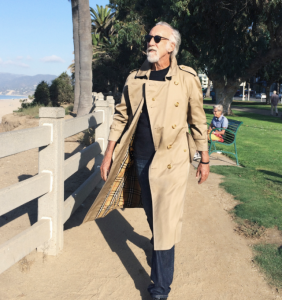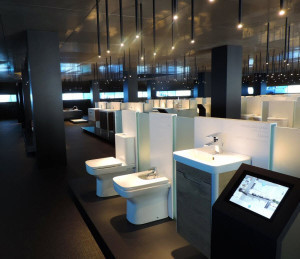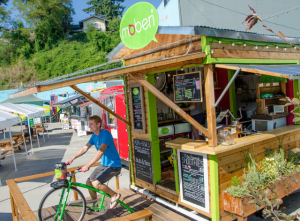Bryan Pearson's Blog, page 28
March 19, 2015
March 19: Loyalty Links & Likes
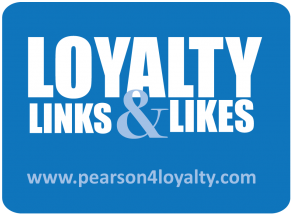 5 Things Your Loyalty Program Should and Shouldn’t Be – Marketing Interactive
5 Things Your Loyalty Program Should and Shouldn’t Be – Marketing Interactive
The days of exclusive loyalty are long gone as consumers are presented with numerous choices, yet loyalty programs are still a vital aspect in the goal of generating revenue. This article offers five tips for making a compelling program and what that does – and doesn’t – look like.
Tackling Customer Loyalty in the Travel Industry – PerformanceIN
In loyalty marketing, specifically in the travel industry, it can be the small things that add up to win over a customer. This extract from PerformanceIN’s Travel Performance Marketing digital supplement takes a look at the challenges loyalty marketers face in breeding travel loyalty.
American Express to Launch Coalition Loyalty Program in US – COLLOQUY
American Express announced this week the launch of Plenti, a coalition loyalty program in the United States. This COLLOQUY news item features excerpts from an interview with Abeer Bhatia, CEO of U.S. Loyalty at American Express, who gives some background on the development of the program.
How Disney, FedEx Create Value at the Corner of Customer Experience and the Internet of Things – Forbes
The ever-growing mountain of machine-generated data from the Internet of Things will be a major force in big marketing initiatives – specifically for tailoring the customer experience – for years to come. In this column, Teradata provides examples of how large companies such as Disney and FedEx have leveraged mined data to make their offerings more customer-focused.
Time to Focus on the Twin Pillars of Big Data 2.0 – The Wall Street Journal
In this column, part of The Wall Street Journal’s CIO Journal, Randy Bean lays out what he feels are the two big foundational pillars of big data in today’s modern business environment – data integration and data governance.
March 16, 2015
Out of the Trenches, Into the Aisles: How Coke, Burberry Derive Devotion Digitally
If colas and coats can claim one thing in common it is this: Two of the best-known makers of each are trying to transform the historic into meteoric through the clever use of digital marketing.
In one aisle we have Coca-Cola, an American classic that in late January launched a new iteration of its popular My Coke Rewards, one of the largest loyalty programs in the packaged goods industry. The new version offers program members a second way to earn points – not through purchases, but through activities such as playing games, completing surveys and communicating through social media.
In the other aisle we have Burberry, the landmark British apparel brand whose iconic trench coat swathed Hollywood stars as well as World War I soldiers. At risk of losing its glow among young consumers, Burberry over the past several years transformed its image from stodgy to spectacular in part through several digital marketing initiatives, including Art of the Trench and Burberry Acoustic.
Both brand initiatives may appear to steer the shopper away from the store, because they engage her through her smartphone, tablet or computer, rather than directly in a retail environment. In actuality, however, such digital connections can and do encourage in-store activity, by engaging the consumer in a positive way and leaving a long-serving imprint.
Let’s look first at My Coke Rewards. Its move to include digital activities in its rewards earnings model emphasizes the need for major brands to recognize that consumers see them as more than mere products. Rather, the most loyal customers view the brands they use as deliverers of experiences, said Kim Gnatt, global group director of digital marketing for Coca-Cola North America.
“Modernizing our loyalty program was essential to meeting the evolving desires and expectations of our consumers, brands and partners,” Gnatt said in an email. “We’re able to tailor users’ experiences based on the content and brands they interact with onsite, self-select within their profiles and provide at registration.”
Similarly, Burberry reinvented itself by incorporating its customers into its digital and social experiences. Its Art of the Trench project, launched in 2009, encouraged Burberry wearers to share photos of themselves donning their trenches. The concept appealed to Burberry loyalists while also attracting younger consumers who might want their 15 minutes of fame, according to a case study in Business Today. By 2012, Burberry had moved 60 percent of its marketing budget to digital.
Now let’s bring these efforts back into the aisles – both in-store and online.
Burberry’s digital and social endeavors contributed to some solidly buttoned-up performances. In the fiscal year ended March 2014, total sales rose 19% over fiscal 2013, to 2.3 billion pounds ($3.8 billion). In the third quarter of fiscal 2015 ended January, sales rose an additional 15%, to 604 million pounds ($939.3 million).
“We continued during the year to fuse the physical and digital to enhance the brand experience wherever the customer engages with us,” Christopher Bailey, CEO and chief creative officer of Burberry, said in a 2014 analyst call. “For example, we further leveraged data and insight to create increasingly personalized customer experiences.”
It’s a little too soon to measure the effect of My Coke Rewards on Coke’s overall performance, but North American sales rose 2%, to $5.37 billion, in the fourth quarter of 2015 – Coke’s first North American sales increase in four quarters, according to Reuters.
“It was essential that the program strive for seamless integration into the lives of members, making engagement feel more organic,” Gnatt said of the program change.
Both efforts exemplify how engagement at home – or office, or bus, or city street – can easily lead the consumer into the store. The key is beguiling her or him with an experience so personalized, so individually spot-on, that the consumer makes a place in her heart for it. Kevin Roberts at the advertising powerhouse Saatchi & Saatchi coined a term for this effect – lovemark. It means the replacement of a brand with love.
It may sound a like a lofty order for colas and coats, but Coke and Burberry are proving that delivering experiences that can be as important as delivering product.
This article originally appeared on Forbes.com, where Bryan serves as a retail contributor. You can view the original story here.
March 11, 2015
March 11: Loyalty Links & Likes
 The Secret to Amazon’s Customer Loyalty Success – Business 2 Community
The Secret to Amazon’s Customer Loyalty Success – Business 2 Community
With a 93% level of customer engagement, Amazon continues to be at the forefront of the customer loyalty game, so what’s its secret? This article dives into how Amazon has evolved its subscription-based Prime service from a simple discount tool to a customer loyalty and engagement industry benchmark.
How to Respond to Bad Reviews to Build Customer Loyalty – Entrepreneur
We’ve all seen these types of stories in the news. An angry customer leaves a bad review about a product or service on a website and the company responds with hostility – to the detriment of its own reputation. While bad reviews are often unavoidable, businesses can still salvage the customer relationship by being proactive and sincere.
A Little Food, A Little Drink, A Lotta Loyalty at TGI Fridays – COLLOQUY
With an increased focus on technology and emotional connections with customers, TGI Fridays is redefining loyalty in the casual dining category. In this Q&A, TGI Fridays senior director of CRM and loyalty, Michelle Malish, explains the strategy behind the Give Me More Stripes loyalty program.
Is Your Operating Model Set Up to Delight Customers? – Forbes
Many large companies are beginning to see the value in becoming customer-focused organizations. However, existing operating models – how they organize resources to execute strategy – do not always work well with the complex changes required to adapt to the customer landscape.
Four Top Hotel CEOs Say How Brand Loyalty Has Changed – Skift
In an industry driven heavily by price competition, it can be difficult for hotels to influence customers on an emotional level. This article, an excerpt from the e-book ‘Future of the Guest Experience,’ features four hotel CEOs’ opinions on the way hotel loyalty is changing.
March 5, 2015
Sex Appeal and the Citysumer – 10 Retailers that Excite
As a self-described “citysumer,” I make trips to one of many stores almost every day. But it took trips to two major cities – Barcelona and New York – for me to realize just how colorless my retail experiences have become.
In fact, I’d wager one of the biggest threats to the Famous American Brand is not fellow competition, but citysumers – sophisticated suburbanites who are more demanding, better connected and more likely to try new ideas than their shopping predecessors. First identified by Trendwatching.com in 2011, this swell of spontaneous consumers is the result of an urban boom, increased urban wealth and the resulting spread of urban values and culture.
The upshot: Some of the coolest retail brands derive from these kinds of environments, from Vancouver (Lululemon) to London (Lush cosmetic) to Manhattan (Warby Parker). Yet as many citysumers trudge from one stack-‘em-high-and-let-‘em-fly store to the next, we are forced to wonder: Where are the nation’s fresh brands? What will be the next Lululemon of loungewear?
The Lush of brasseries? Where’s the Warby Parker of homegoods?
They are out there, I’ve found, breaking out from small corners of big cities and elsewhere; leaving an impression that promises to change the course of commerce. Following is a mash-up of some of the most buzz-worthy concepts in retail as highlighted on a February business trip to Barcelona and during the National Retail Federation’s Big Show in New York in January.*
One of the world’s top brands in bathroom fixtures, this Spanish merchant’s flagship store is a literal jewel box. The glass-encased showroom, in Barcelona, displays Roca’s high-end sinks and tubs like rare gems. Indeed, the entire experience replicates that of a museum, from the interactive digital displays to the wall-adhered product descriptions. Large visual screens depict customers using Roca products, and specifications are accessible via interactive video.
Inventory at this London-based showroom is limited to just one car but the options are as wide as the imagination. Through four “powerwalls,” visitors customize their Audis – from the engine to the interior – using table-mounted touchscreens. Once done, they can interact with their vehicle on the powerwall. Audi provides an RFID stick through which customer can purchase the car at a dealer location or online.
This chain, in Barcelona, Madrid and Mexico, does not merely sell sustainably sourced baby foods and fashions; it packages environmentally committed lifestyles. A chalkboard at the entrance lists educational events that are held in an expansive play-and-party area in the back. Visitors are encouraged to touch and play with nearly every product, inspiring ecological awareness, while an in-store café offers a place to relax, bond and sample organic treats.
Glade Boutique pop-up
It was temporary, but the idea lives on. The Glade Boutique, which operated in New York during the 2014 holiday season, transformed a take-for-granted product into a state of emotion. Make those five emotions, each with its own scent and mood to match. In the peony- and cherry-scented Flirty room, visitors posed for fashion shoots in designer gowns, while the red honeysuckle-scented Energize room took visitors on a thrill ride in an augmented reality game.
We should not forget the best ideas might be rooted in the past. Such is the case with Barcelona’s Gra de Gracia, a shop that embodies the concept of “unbranding.” In its aisles of bins, vats and baskets of loose products, customers follow a three-step process: choose a container, fill it and weigh it to determine the price. The knowledgeable staff provides weekly meal plans, recipes and detailed information about product sourcing.
While Gra de Gracia embodies unbranding, the shop Story unwinds it, by completely changing itself every six or so weeks. Like a whiteboard, the New York merchant wipes itself clean, removes every bit of interior and reinvents the brand. It has served as a physical home for e-commerce sites like Birchbox, as well as a venue for pasta making and presentations. The goal: To serve as matchmaker between brands and consumers.
The yoghurt-themed eatery in Barcelona, the first for Danone (Dannon), inspires visitors with culture – its own. Vintage Danone merchandise and memorabilia, including a three-wheeled delivery vehicle, mingle with touchscreen kiosks that share brand history. At the popular “yogurteria,” diners customize frozen yogurt treats with various toppings. Later, when customers see the Danone brand in stores, they associate it with good nutrition and value.
Lots of products move in and out of Oxfam, a second-hand non-profit in the United Kingdom. Fortunately, someone realized these items came with stories. So Oxfam invited donors to send personal yarns about the items they donated. One little blue teapot, for instance, arrived at Oxfam in search of a better suited home, since it no longer matched its former kitchen, now red.
Fabrica Moritz Barcelona
This outlet for Spain’s oldest beer is more cultural gastronomic center than traditional brewpub. The expansive outlet houses a wide range of attractions that could captivate customers for a full day, including a tapas and wine bar, the M-Store featuring a variety of Moritz-branded merchandise, a bakery, a newsstand and a multipurpose space that can be rented out.
This is where the rubber meets the rhubarb. Moberi is an actual bike-powered smoothie bar. Customers of this Portland, Oregon, business get on a Schwinn exercise bike and crank it out until the berries in the fender blender are pulverized. The customers burn energy while saving energy, and are rewarded with the fruits of their labors.
All of these concepts have a common denominator: an element of surprise, which results in excitement. Citysumers crave it, but we are not alone. Shoppers across the world are succumbing to the predictability of our surrounding.
Merchants have the power to change that, and in places like Barcelona, London and even Portland, they have already started. We citysumers will take our dollars to the shops that appeal to us, and inject color into our experiences.
*Special thanks to Alison Embrey Medina, executive editor of the magazine design:retail for bringing some of these merchants to light at the National Retail Federation’s Big Show, and to Jill Z. McBride for her photos and insights during the Barcelona tour.
This article originally appeared on Forbes.com, where Bryan serves as a retail contributor. You can view the original story here.
March 4, 2015
March 4: Loyalty Links & Likes
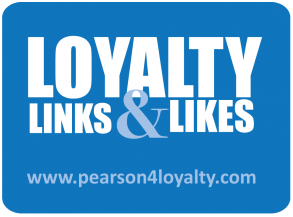 What Loyalty Marketers Can Learn from Dating – Business 2 Community
What Loyalty Marketers Can Learn from Dating – Business 2 Community
In this article, Geoff Smith of CrowdTwist argues that persuading people to join a loyalty program is a lot like dating. If a company comes on too strongly, it risks pushing a customer away. Sometimes a slow-and-steady approach, allowing the customer to become comfortable first, is the best plan of action.
From Apple to SoulCycle: Here’s How Cult Brands Breed Loyalty and Fanaticism – Entrepreneur
Much like social cults, the brands that inspire fanatical levels of loyalty – like Apple, Harley Davidson, Lululemon and more – are those that move customers to act irrationally. These so-called cult companies often gain loyalty by pandering to customer emotion, but how can these brands maintain their momentum in the long term?
Dialing C for Customers: How Telecoms Are Moving From Products to Customer Focus – COLLLOQUY
Telecommunications companies, like much of the commodities sector, are struggling to increase their customer bases and compete on pricing. In light of these challenges, many telcos are turning to customer loyalty and engagement initiatives to help improve business performance, writes LoyaltyOne’s Caroline Papadatos.
To Win the Customer Experience Battle Companies Need A Customer-Focused C-Suite – Forbes
Many marketing experts have recently championed the role of the chief customer officer, touting the benefits a fully customer-oriented business mindset can have on overall performance. Despite this, a recent survey found there are approximately 400 active CCO’s globally, meaning that opportunity abounds for those that have yet to change their customer philosophy.
Technology Gives E-Commerce Players an Edge on Customer Loyalty – Marketing Interactive
There is no doubt that customers across the globe love online shopping, with customers in China spending $540 billion online in 2014 alone. Rickie Hobbie of Epsilon analyzes the Chinese e-commerce market and offers tips on how to encourage customer loyalty through online transactions.
February 25, 2015
February 25: Loyalty Links & Likes
 9 Stats That Prove the Value of Loyalty – The Business Journals
9 Stats That Prove the Value of Loyalty – The Business Journals
The emergence of tools and technologies that enable companies to collect and analyze data means any business of any size can benefit from a loyalty program. Nine stats in this article prove the overall value of loyalty programs and can help prove their worth to business leaders who might still be skeptical.
Personalization: Engaging With Your Customers and Creating Long-Term Loyalty – Business 2 Community
The digital age has ushered in the use of technology-driven user engagement initiatives. What does this look like and how does Big Data play a key role in making web interactions a personal, tailored experience for each customer?
Old Dogs, New Tricks: Loyalty Visits the Veterinarian - COLLOQUY
A recent study that revealed the dire business environments of veterinary operations served as a big wake up call to the pet healthcare industry. With this in mind, many practices have adopted loyalty strategies and programs to make visits to the vet a special experience for pets and their owners.
What People Really Want From Mobile Wallets – Fortune
Tech giants like Apple and Google are investing heavily in mobile wallet technologies and services. To make sure they get it right, they need to emulate the tactics of companies like Starbucks, which sees the value in adding a consumer engagement aspect to its mobile payment services.
8 Ways to Create a Successful Multichannel Customer Experience – CIO
Today’s customers want the emotional and physical experience of trying out products in-store, but also the convenience of shopping online. What steps can brands and retailers make to cover both these needs and create a seamless experience? Experts in retail, ecommerce and customer experience share their thoughts.
February 23, 2015
From Options to Oranges: Whole Food’s Rewards a Natural for Growth
Whole Foods is enjoying the fruits of its marketing labor these days, but its long-term success may rely more on its affinity for workers than affinity with shoppers.
Until 2014, Whole Foods had not so much as tested a customer-rewards program because it likely didn’t see the need to. Its shoppers sought out its stores for the quality of its natural products as well as for the amiable, knowledgeable staff – not for discounts.
But with the September launch of a pilot affinity (loyalty) program, called Whole Foods Market Rewards, as well as efforts to stock the shelves with more inexpensive items, Whole Foods appears to have recognized that price is becoming more of a competitive issue, regardless of its helpful employees and service.
Early indications are that Market Rewards is resonating with shoppers. Activation rates are high and member basket sizes are above the average, co-CEO Walter Robb told analysts during a first-quarter conference call Feb. 11. The program, launched in New Jersey in September, is now scheduled to expand into Washington, D.C., in the spring, “with hopes of having it live in a majority of stores for the 2015 holiday season,” Robb said, according to Supermarket News.
Whole Foods credits the program, along with its first national marketing campaign, for contributing to record first-quarter sales, up a better-than-expected 10.2 percent to $4.7 billion. But none of these efforts would be worth the increasing number of 365 private label products on Whole Foods’ shelves without the encouraged participation of its workers. The chain’s executives appear to know this too, in spades.
Gaining through employee rewards
Whole Foods’ compensation program is designed to reward all team members for positive stock performances. The rewards come in the form of stock options through annual grants for workers who achieve 6,000 hours (about three years full-time work). More than 58,000 of Whole Foods’ 87,200 workers are full-time. Roughly 94 percent of equity awards under the stock plan have been granted to non-executive team members.
In addition, Whole Foods offers an annual gain-sharing program which challenges each store’s roughly 10 teams of employees to outperform a labor budget. If the team comes in under budget, a portion of the excess is divided among the team members and the balance is deposited into a savings pool. If a team comes in over budget, the difference is taken out of the team’s savings pool or paid back through future surpluses. Those savings pools that end the year flush are paid out to their teams.
“Team members are involved at all levels of our business,” the company stated in its annual report. “We strive to create a company-wide consciousness of ‘shared fate’ by uniting the interests of team members as closely as possible with those of our shareholders.”
And the interest of Whole Foods’ shareholders has been well served recently. The company’s stock advanced by more than $3 a share on the day it posted first-quarter earnings, and reached a near all-time high of $57 a week later. However, Wall Street is a what-have-you-done-for-me-lately animal, and as competition becomes more of an issue, Whole Foods will likely need its employees to further distinguish the brand experience. Its Market Rewards program may be the necessary tool to do that.
Engaging through affinity
Let’s not forget it was not too long ago – May 2014 – when Whole Foods revised its earnings outlook for the third time in six months due largely to competition. The company responded by cutting prices in some areas, but this surgical tactic did not address the bigger issue of perception: A lot of shoppers avoid Whole Foods based on a belief – not experience – that it is too expensive. As a result, they miss out on the entire experience, which includes employee engagement.
With a loyalty program expanding, Whole Foods will gain the ability to understand the underlying dynamics of shopper behavior. These activities can illuminate how pricing may affect not only the sales performance of an individual product but also of adjacent products that are harder to detect in the traditional, basket-level analyses. For example, a higher price on natural yoghurt may prevent the customer from buying a couple pints of strawberries, effectively eliminating two (or three) purchases.
Not that Whole Foods should try to go mano a mayo with Kroger or other price-competitive chains, and it likely won’t – co-CEO John Mackey has pledged so much. Rather, it should use Market Rewards to craft strategic, experience-based promotions that are true to the brand and its value. Instead of discounts, its rewards can evolve to arrive in the forms of VIP cooking classes, recipes that involve products a customer often buys and personalized thank-you emails from employees of the week.
People shop Whole Foods because it stands for more than food, so it should consider the Market Rewards test as an opportunity to shape the full customer experience – price, advice, product preparation and product assortment. In other words, give shoppers a reason to want to pay more, through an exclusive experience, and deliver value where it needs to be evident.
As Mackey told analysts: “Whole Foods is about quality. It’s about service. It’s about selection. It’s about ambiance. We’ve never been and we never will be trying to be the lowest-priced supermarket.”
Combine its affinity pilot program with affinity for workers, and Whole Foods can be about the options it offers everyone.
This article originally appeared on Forbes.com, where Bryan serves as a retail contributor. You can view the original story here.
February 18, 2015
February 18: Loyalty Links & Likes
 The Three Biggest Mistakes Marketers Make With Loyalty Programs - Marketing Interactive
The Three Biggest Mistakes Marketers Make With Loyalty Programs - Marketing InteractiveThis article looks at three errors companies make when considering or implementing loyalty programs. Some companies have simply been late to the loyalty game, while others struggle to get their organization on-board.
Marketing is Dead, and Loyalty Killed It - Harvard Business Review
Marketing strategy expert and Harvard Business Review contributor Alexander Jutkowitz believes that marketers’ jobs may become irrelevant if they don’t become loyalty specialists. Put simply, companies can redefine a brand by de-emphasizing traditional marketing tactics and focusing more on customer engagement.
Taking Wind Amid Competition: 3 Ways to Make Loyalty an Airline Asset - COLLOQUY
Travel expert and COLLOQUY contributing editor Ryan Lile takes a look at how consolidation has altered airline industry over the last decade and recommends ways for airlines to use loyalty as a strategic weapon.
Your Loyalty Program Isn’t Creating Loyal Customers - AdAge
Many companies believe their loyalty programs have solved the problem of promiscuous customers, but often the transactional benefits inherent in many programs are more about increasing frequency than devotion to a brand. In this article, Forrester Research analyst Emily Collins offers reasons why traditional approaches to loyalty simply don’t cut it anymore.
What’s Holding MPOS Back in Big Retail? - PYMNTS.com
In this article, John Perry and Ruston Miles of Bluefin Payment Systems discuss the general difficulty mobile point-of-sale technologies have had achieving ubiquity. Security of customer data and information is of the largest concern, especially for big retailers, but a technology called point-to-point encryption may be the answer to their prayers.
February 16, 2015
Outsmarting the Hype of TV and Car Technologies
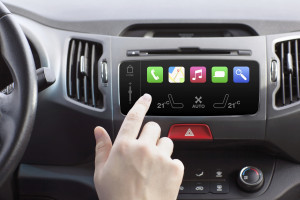 Old sci-fi movies warned us that robots might one day take over the world. Based on recent news reports, our cars and televisions could beat them to it.
Old sci-fi movies warned us that robots might one day take over the world. Based on recent news reports, our cars and televisions could beat them to it.
Two topical, though controversial, stories indicate so much. One involves televisions that can see and hear their viewers. The other addresses how wireless technologies in vehicles can compromise a driver’s security and privacy.
Let’s look at the TV story first, aired on the Today show and several other outlets. According to the reports, the voice-recognizing Samsung smart TV is embedded with microphones (one in the TV and one in the remote control) that collect interactive voice commands. According to the company’s privacy policy, some personal conversations could also be captured.
“Please be aware that if your spoken words include personal or other sensitive information, that information will be among the data captured and transmitted to a third party.”
That statement generated a media buzz, so Samsung clarified the warning on its blog, stating its TVs collect voice commands only when the user makes specific search requests by hitting the activation button. The company has also made clear it does not sell the data.
The second story, about smart cars, stems from a report by Massachusetts Sen. Ed Markey. He sent inquiries to 20 automakers to learn what they are doing to protect their technology, and data, from potential hackers.
“Cybersecurity experts have long warned that cars’ electronic systems might be vulnerable to hackers, especially as auto-makers started building wireless connections to the outside world into vehicles,” a Washington Post story states.
Granted, this is not a loyalty marketing issue, but the course it takes can certainly benefit from loyalty marketing best practices. To me, it is simply a matter of greater transparency, education and choice.
If consumers want TVs that can hear their conversations and cars that gather their driving histories, they certainly have the right to possess them. The onus is on organizations that take advantage of these technologies to educate their evolving consumers about how the technology works, what information is gathered and used, and how it can deliver on customer expectations.
The makers of consumer goods should not be browbeaten into stopping technological progress and developing products to meet consumer demands. Rather, they’d benefit from advocating for greater education, awareness and promotion of emerging technologies as well as their implications (positive and negative) to the marketplace.
Whether the smarts are built into TVs, cars or robots, the guidelines should be the same.
February 11, 2015
February 11: Loyalty Links & Likes
 Cha-Ching: 3 Rewards Programs Worth Cashing In On – CNBC
Cha-Ching: 3 Rewards Programs Worth Cashing In On – CNBC
CNBC reporter Kelli Grant takes a look at the recently released COLLOQUY Loyalty Census to determine which three industries offer some compelling loyalty programs that distinguish themselves from traditional programs. Using data from the Census, she reviews programs in the drugstore, online travel and restaurant industries.
How ‘Pull’ Marketing Can Boost SEO, Loyalty for C-Stores – CSPnet
When designing customer-facing websites, many companies focus only on pushing their messages out, without considering the user experience that can help ‘pull’ customers into a brand. This article offers up the example of a Colorado convenience store chain that boosted its web presence with a complete online overhaul, and reaped the benefits.
Connecting the Points: Top 10 Loyalty Musts – COLLOQUY
The loyalty landscape is changing, and marketers must be adaptable to continue meeting the needs of their customers. COLLOQUY’s editor-at-large, Dennis Armbruster, offers up 10 requirements for winning in loyalty in 2015 and beyond.
The Simple Secret to Earning Customer Loyalty – Business 2 Community
Some marketers rely on complicated strategies and analytical models to marginally gain customer loyalty, but sometimes just following through on promises and focusing on customer service make a world of difference. This article provides three examples of good, and not so good, customer experiences that make or break customer loyalty.
3 Words for Loyalty Marketing in 2015 – Loyalty Truth
Loyalty expert Bill Hanifin details the three words that he feels define the course loyalty marketing will take as companies begin focusing resources on loyalty efforts in the next year.
Bryan Pearson's Blog
- Bryan Pearson's profile
- 4 followers



